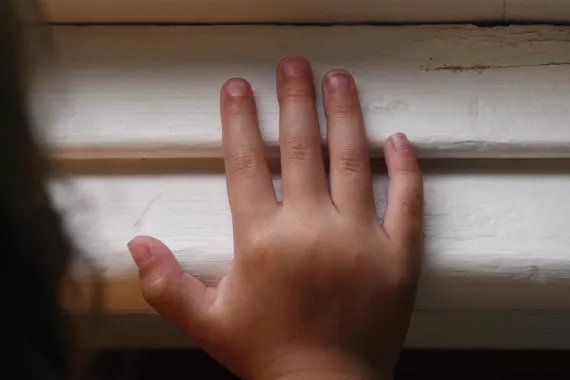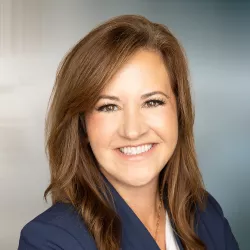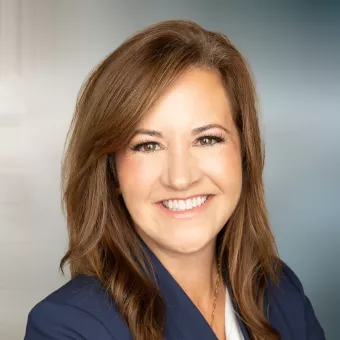
Case Overview
Lead poisoning is one of the most common health problems impacting American children today. It affects roughly half a million children in the U.S. ages five and under, as of 2017. If you, your child, or a loved one have developed lead poisoning, a lead poisoning lawsuit may help you get the compensation you need to aid in recovery. Lead poisoning can cause serious developmental and intellectual delays in children, which may be permanent. In adults, lead poisoning can cause ongoing or temporary health concerns. No parent wants to discover that their child’s learning delay or behavioral disorders are due to an entirely preventable, yet often unknown, cause.
Key takeaways about lead poisoning lawsuits
- Lead poisoning happens due to exposure to high levels of lead. Exposure may occur when people ingest contaminated products like foods, spices and water.
- Both children and adults can suffer from lead poisoning, but children may develop life-long health issues due to exposure.
- You may be able to file a lawsuit for lead poisoning against the business, manufacturer or organization responsible for the exposure to your child.
What is lead poisoning?
Lead poisoning, also called “plumbism,” happens as a result of exposure to high levels of lead. Exposure is often through the ingestion or inhalation of contaminated food or water, lead-based paint, lead-contaminated dust and other similar sources.
Common sources of childhood lead exposure include food pouches, spices, foods enriched with contaminated vitamins, baby formula and other products. They may also be exposed to lead in older homes and buildings where lead-based paint is still on the walls, windows and doors.
Adults exposure can come from all of the same sources. Adults may be more likely to come into contact with lead at work or in older buildings.
Some of the most common sources of lead that increase the risk of lead poisoning in both children and adults include:
- Ceramics and dishware made with lead-containing glazes and paints
- Contaminated food like baby food pouches, applesauce and other products
- Contaminated soil
- Drinking water
- Dust containing lead, often found in industrial and home improvement settings
- Imported candy
- Jewelry
- Lead-based paint
- Spices using lead-based pigments to increase color
- Toys
Though lead poisoning can impact individuals of all ages, it’s a major concern for children. This is because children tend to absorb more lead through their digestive tract than adults, even when they’re exposed to the same levels of lead. This increased exposure may lead to worse symptoms of lead poisoning.
Exposure to even small amounts of lead can lead to serious health conditions like central nervous system damage, seizures and coma in children and fatigue and trouble sleeping in adults.
Childhood lead poisoning
There is no safe level of lead in the blood. For children, even small amounts of lead can cause persistent cognitive damage. High levels can cause learning disabilities, attention-deficit disorder (ADHD), mental retardation, stunted growth, seizures, coma and even death.
Lead has been banned from paint products since 1978. But, homes built before that time often still contain the harmful substance. According to the Centers for Disease Control and Prevention (CDC), more than four million U.S. homes have children living in them who are being exposed to high levels of lead.
As these homes age, lead paint deterioration becomes a major concern. Lead paint chips, flecks and dust can become dislodged and may be ingested by young children. The National Center for Healthy Housing (NCHH) estimates that one gram of lead dust — about the contents of a sugar packet — spread evenly through 100 rooms can leave dust levels of more than twice the federal standard.
Effects of childhood lead poisoning
Children may absorb up to 5 times more lead than adults from any given source. This may explain why they’re more likely to experience long-term health conditions than adults exposed to the same amount of lead.
Early detection of lead poisoning may help parents reduce further exposure. Some common symptoms of lead poisoning include:
- Abdominal pain
- Anemia
- Appetite loss
- Constipation
- Fatigue
- Irritability
- Nausea and vomiting
- Weight loss
Children diagnosed with lead poisoning often suffer from longer term health and developmental concerns. Some of the effects of lead poisoning include:
- Behavioral disorders
- Brain damage
- Hearing loss
- Hyperactivity or attention deficit disorder
- Learning disabilities
- Renal damage
- Speech delay
- Stunted growth
If you suspect that your child has been exposed to lead or notice the symptoms of lead poisoning, schedule an appointment with their pediatrician immediately. They’ll be able to assess your child’s condition and run the necessary blood lead level tests to determine if the symptoms are the result of lead poisoning or another underlying condition.
Recent childhood lead poisoning case
Lead poisoning can be particularly dangerous for young children. The FDA received more than 200 reports of adverse health events related to recalled fruit pouches. The fruit/applesauce pouches were found to contain high lead levels. The lead in the fruit puree pouches seems to have resulted from the use of cinnamon contaminated with lead.
In October 2023, the FDA launched an investigation after receiving complaints of young children with elevated lead blood levels. The investigation showed a link between those affected children and WanaBana apple cinnamon fruit puree pouches. Through further analysis, the FDA determined that the contamination extended to other WanaBana subsidiary companies and issued a recall for all affected products across all product lines.
Since then, the FDA has also issued an advisory encouraging consumers to avoid buying certain cinnamon products to further reduce their exposure to lead.
Learn more about the WanaBana fruit pouch recall.
Adult lead exposure
Though lead poses the greatest risk to young children, lead exposure can also pose serious dangers to pregnant women and industrial workers. Some common sources of lead exposure for adults include but are not limited to:
- Battery production
- Drinking water from lead pipes
- Removing lead-based paint
- Smelting
- Soldering or installing stained glass
- Working in construction
- Working in gasoline refineries
- Working in the copper industry
- Working in the automotive repair industry
Further, workers in these industries may bring dust home from their workplaces, resulting in secondhand exposure and poisoning to children and other household members. If you or a loved one has been exposed to lead through the course of their work or you’re concerned about potentially elevated blood lead levels, speak with your doctor immediately.
Effects of adult lead poisoning
Though adults are more likely to be able to recover from lead poisoning than children, elevated lead levels and exposure can lead to some noticeable symptoms and conditions. Some of these symptoms include:
- Abdominal pain
- Difficulty concentrating
- Headache
- Joint pain
- Muscle pain
Repeat or prolonged exposure to lead and the development of lead poisoning can also lead to several health conditions. These include:
- High blood pressure
- Mood disorders
- Miscarriage in women
- Premature birth in women
- Reduced sperm count in men
Seek medical care if you or a loved one is experiencing any of these symptoms or have developed any of these conditions.
Lead Poisoning Resources
Keep reading below to learn more about the effects of childhood and adult lead exposure, what to do if you’ve been exposed and how to file a lead lawsuit. Here are additional resources about the impacts and prevention of lead poisoning:
- CDC Childhood Lead Poisoning Prevention Program
- Environmental Protection Agency: Lead
- Housing and Urban Development: Office of Healthy Homes and Lead Hazard Control
- National Center for Healthy Housing
- National Safety Council on Lead Poisoning
- Occupational Safety and Health Administration: Lead
- Occupational Safety and Health Administration: National list of blood lead-level testing facilities
What do I do if your child has lead exposure?
If your child has been exposed to lead or is suffering from any of the symptoms of lead poisoning, consult with a doctor as soon as possible. Often, the only way to accurately diagnose and identify lead poisoning is through a medical screening. For children, early detection is key.
Testing for lead poisoning requires a small blood sample, typically retrieved with a finger prick. A doctor will then test and analyze the sample to determine if lead is present in the blood and the concentration level of the lead.
In children, there is typically no safe amount of lead. Finding any in their blood may be cause for concern. Adults typically have higher tolerances, but levels between 10 and 25 µg/dL may indicate a buildup caused by repeat exposure to lead.
If your child shows elevated levels of lead in their blood, your doctor will be able to recommend a treatment protocol to help mitigate symptoms and aid recovery. Keep in mind that exposure in children may lead to permanent health issues like mental delays, developmental delays and behavioral disorders.
Individuals and their loved ones suffering from lead poisoning may be able to take legal action with the help of a lead poisoning attorney. Attorneys at Motley Rice have litigated a number of matters related to childhood lead exposure.
Lawsuits for lead poisoning
Lead poisoning may lead to serious health conditions that can impact both children and adults for years after exposure. Individuals and families who have been impacted by lead poisoning may be able to seek legal help.
Lead poisoning lawsuits have been filed against companies, schools, municipalities, workplaces and other similar organizations to help those affected get the compensation they need to help cover the cost of their recoveries and ongoing medical treatments. Motley Rice and other law firms have represented plaintiffs in their claims.
Lead lawsuits are filed by knowledgeable attorneys on behalf of plaintiffs (children and adults who were exposed to lead) against the defendants (the companies and organizations responsible for the exposure).
If your child or a loved one has been exposed to lead and suffered from lead poisoning, speak to a Motley Rice lead poisoning attorney. They can help you learn more about the lawsuits currently taking place and to see if you may have a lead poisoning claim. While an outcome is never guaranteed, lead poisoning claims can result in jury verdict awards or lead poisoning settlements.
California lead poisoning litigation
Motley Rice attorneys and co-counsel have worked for 20 years to hold paint companies responsible for their actions. The companies concealed the dangers of lead and actively promoted lead paint for use in homes despite knowing it was highly toxic. Companies held responsible include ConAgra Grocery Products Company, NL Industries and Sherwin-Williams. The purpose of this litigation was to prevent lead poisoning from happening in homes and other buildings in 10 California cities and counties.
Defendants argued they were not aware of the harmful effects of lead when they promoted their lead-based paints. However, plaintiffs pointed out that in 1900, paint giant Sherwin-Williams called lead a “deadly cumulative poison.” Sherwin-Williams further stated as more lead was put into paint, more children would be injured. Yet they continued to sell lead for use in paint for more than 70 years.
In January 2014, the honorable Judge James P. Kleinberg finalized his decision for the plaintiffs in People of California v. Atlantic Richfield et al. He ruled that all defendants had to pay California $1.15 billion into a restricted fund. The fund was to help remove toxic paint from affected homes in the participating California municipalities.
A three-justice panel of the California Court of Appeals reviewed the decision on appeal and affirmed the majority of Kleinberg’s ruling in November 2017. They agreed an abatement funded by the defendants would be appropriate to clear toxic paint from homes constructed before 1951. The panel remanded the case back to the Santa Clara Superior Court to determine a new cost to establish the abatement fund.
In February 2018, the Supreme Court of California denied a request from the defense to review the appeal and upheld the appellate panel’s ruling. Similarly, in October 2018, the U.S. Supreme Court also declined to review the litigation, effectively exhausting defense appeals. The Court’s decision enabled discussions to move forward to establish the abatement fund to mitigate the harm. Read more on the Court’s decision.
A $305 million settlement was reached roughly nine months after the Supreme Court decision, resolving the litigation in July 2019. The settlement also removed eligibility restrictions that limited eligibility to pre-1951 constructed homes. Read more about the settlement.
Our experience in lead poisoning cases
Motley Rice’s work related to lead poisoning involves trying to prevent lead poisoning from happening in communities and homes. It also involves representing people whose health has already been negatively affected by lead poisoning.
Our attorneys have litigated lead poisoning cases on behalf of government entities against the lead pigment industry, including in California and Rhode Island.
We are also working with co-counsel to fight for people poisoned by lead in Wisconsin in more than 170 cases. These cases were reactivated in July 2014 when a court of appeals overturned a Wisconsin federal judge’s previous ruling. This action made it possible for people suffering from lead poisoning to pursue the makers of harmful white lead carbonate for negligence and strict liability.
What is lead poisoning?
Childhood lead poisoning
Adult lead exposure
What do I do if your child has lead exposure?
Lawsuits for lead poisoning
Our experience in lead poisoning cases
- Sources
- Cleveland Clinic. Lead Poisoning.
- City of New York. Adults and Lead Poisoning.
- U.S. Food and Drug Administration. FDA Advises Parents and Caregivers Not to Buy or Feed WanaBana Apple Cinnamon Fruit Puree Pouches to Toddlers and Young Children Because of Elevated Lead Levels.
- U.S. Food and Drug Administration. Post- Incident Response Activities: Elevated Lead and Chromium Levels in Cinnamon Applesauce Pouches.
- Gould E. Childhood lead poisoning: conservative estimates of the social and economic benefits of lead hazard control. Environ Health Perspect. 2009 Jul;117(7):1162–7.
- National Center for Healthy Housing. Lead.
- National Library of Medicine. Lead and children.
- New York State Department of Health. Lead Exposure in Adults.
- Mayo Clinic. Lead poisoning.
- Washington State Department of Health. Common Sources of Lead Poisoning.
- World Health Organization (WHO). Lead poisoning.
Start Your Motley Rice Consultation in Simple Steps
Submit Information
Call us or fill out our online form with the details of your potential case.
Case Review
Our team reviews your information to assess your potential case.
Case Consultation
Talk with us about next steps.



